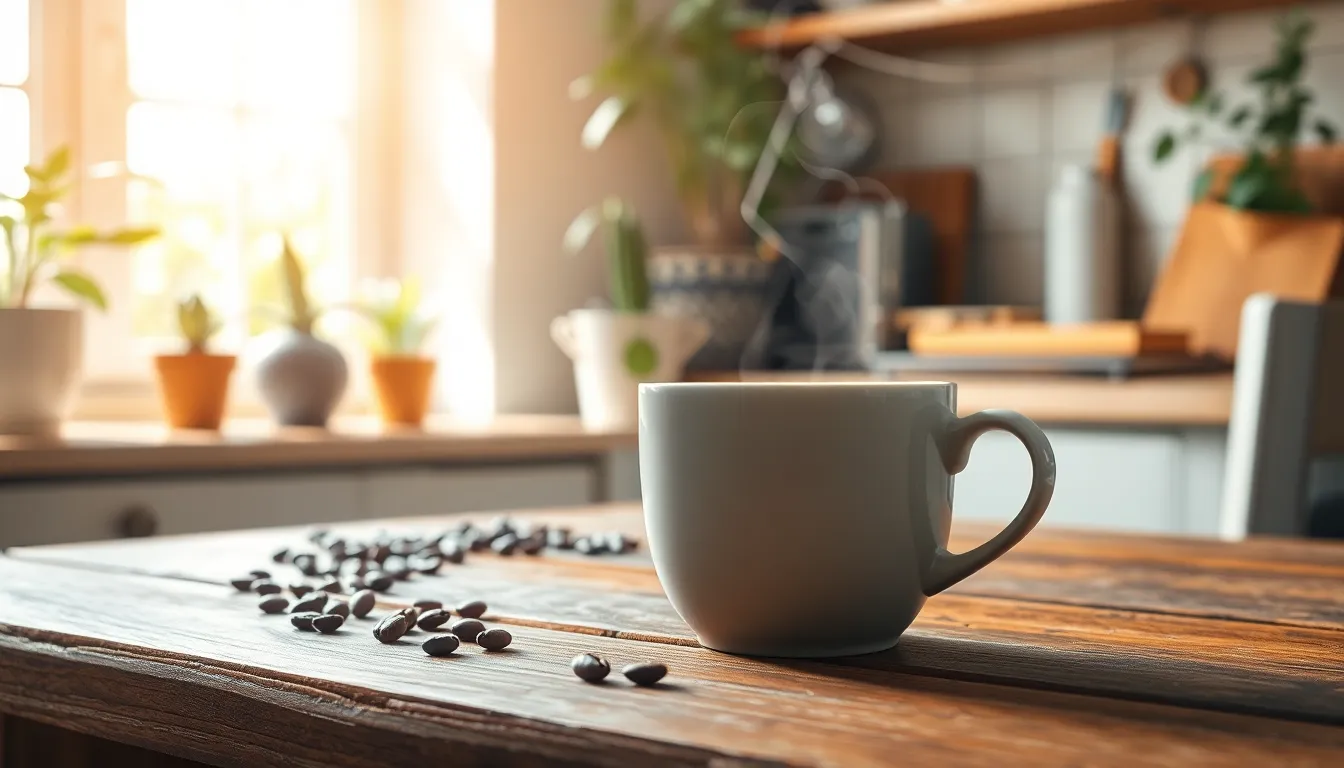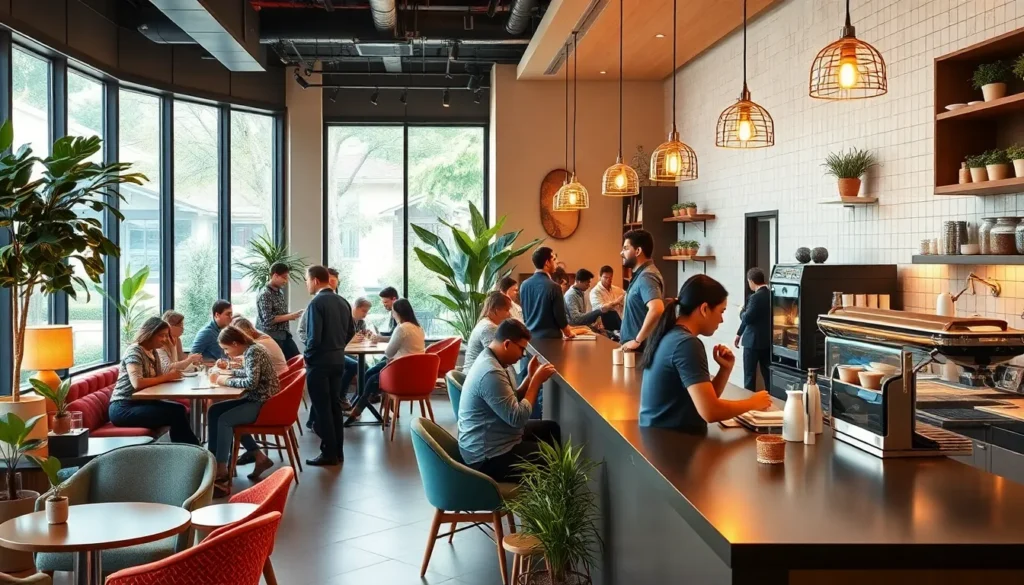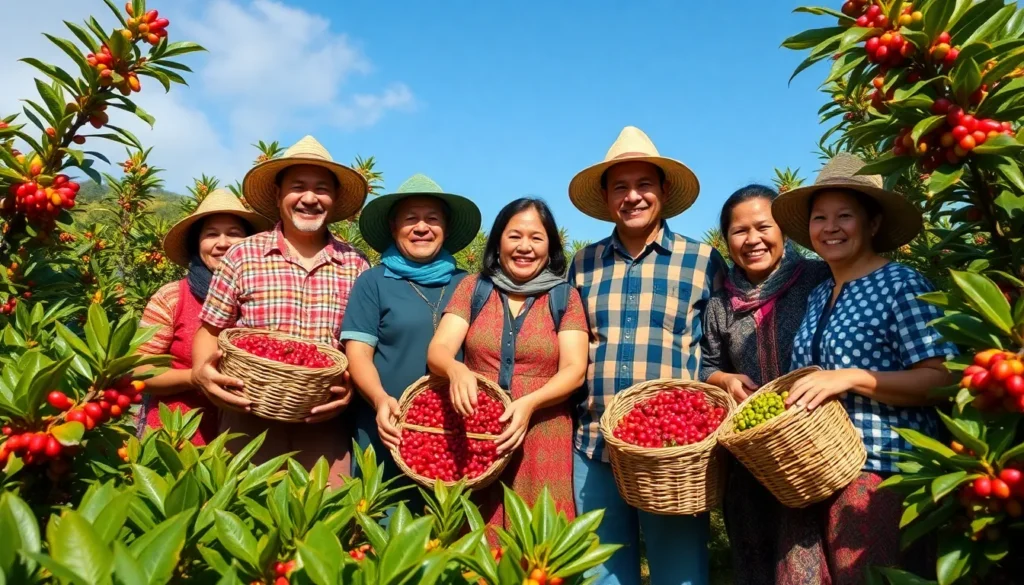Coffee isn’t just a drink; it’s a daily ritual for millions around the globe. From the first sip in the morning to the afternoon pick-me-up, coffee habits shape routines and influence lifestyles. Each cup tells a story, reflecting personal preferences and cultural traditions that vary from one corner of the world to another.
As people explore different brewing methods and flavor profiles, understanding coffee habits becomes essential. Whether it’s the rise of specialty coffee shops or the growing trend of home brewing, these habits reveal much about society’s evolving relationship with this beloved beverage. Dive into the fascinating world of coffee habits and discover how they impact not just individual lives but also the broader coffee culture.
Table of Contents
ToggleUnderstanding Coffee Habits
Coffee habits encompass daily rituals and preferences, revealing a deeper connection to culture, identity, and lifestyle.
Historical Background of Coffee Consumption
Coffee originated in Ethiopia, tracing back to the 15th century. By the 16th century, it spread to the Middle East, Europe, and eventually the Americas. The establishment of coffeehouses in the 17th century popularized social gatherings around coffee consumption. In the 18th century, coffee became a staple in various societies, shaping economies and trade patterns.
Cultural Variations in Coffee Drinking
Cultural differences significantly influence coffee consumption styles.
- Italian Espresso: Italians favor strong, concentrated coffee, often consumed quickly at the bar.
- Turkish Coffee: In Turkey, coffee preparation involves finely ground beans, boiled with water and sugar, served unfiltered.
- American Drip Coffee: Americans typically enjoy larger cups of drip coffee, often with cream and sugar, consumed throughout the day.
- Swedish Fika: In Sweden, coffee breaks known as “fika” involve coffee served with pastries, encouraging social interaction.
These variations not only reflect preferences but also highlight societal values associated with coffee consumption.
Health Impacts of Coffee Habits

Coffee consumption influences health in various ways, providing both benefits and potential drawbacks. Understanding these impacts shapes informed decisions regarding coffee habits.
Positive Effects of Coffee
Coffee offers several health benefits when consumed in moderation.
- Antioxidants: Coffee contains antioxidants, which help combat oxidative stress and reduce inflammation.
- Cognitive Function: Caffeine improves mental alertness, enhances focus, and may lower the risk of neurodegenerative diseases.
- Metabolism Boost: Caffeine can increase metabolic rate, aiding in weight management and fat burning.
- Mood Enhancement: Regular coffee consumption may reduce the risk of depression and improve overall mood due to its stimulant properties.
- Reduced Disease Risks: Studies suggest coffee drinkers face lower risks of certain diseases, including Parkinson’s, type 2 diabetes, and liver conditions.
Potential Drawbacks of Excessive Consumption
Excessive coffee consumption can lead to health issues.
- Anxiety: High caffeine intake may exacerbate anxiety or lead to nervousness, especially in sensitive individuals.
- Insomnia: Consuming coffee late in the day can disrupt sleep patterns, impacting overall well-being.
- Heart Rate Issues: Caffeine can cause increased heart rates or palpitations in some individuals.
- Dependency: Regular high consumption may lead to caffeine dependency, resulting in withdrawal symptoms like headaches and irritability.
- Digestive Problems: Excessive coffee may irritate the gastrointestinal tract, causing discomfort or acid reflux.
Coffee Preparation Methods
Coffee preparation methods vary widely, reflecting regional preferences and individual tastes. Different brewing techniques and accessories enhance the coffee experience, making each cup unique.
Brewing Techniques Around the World
Brewing techniques showcase cultural diversity in coffee enjoyment. Popular methods include:
- Espresso: Originating in Italy, espresso involves forcing hot water through finely-ground coffee under pressure. This method creates a concentrated coffee base used in various drinks like lattes and cappuccinos.
- French Press: Common in many countries, the French press steeps coarse coffee grounds in hot water before pressing down a plunger to separate the grounds from the liquid. This method results in a rich, full-bodied brew.
- Pour-Over: Popularized by specialty coffee shops, pour-over coffee involves manually pouring hot water over coffee grounds in a filter. The slow extraction process allows for precise flavor control.
- Turkish Coffee: A traditional method, Turkish coffee involves boiling finely ground coffee with water and sugar in a cezve. The brewed coffee is unfiltered, resulting in a strong and thick consistency.
- Cold Brew: Gaining popularity, cold brew coffee mixes coarse coffee grounds with cold water and steeps for 12 to 24 hours. This method yields a smooth and less acidic drink.
The Role of Coffee Accessories
Coffee accessories enhance brewing methods, impacting flavor and experience. Important accessories include:
- Coffee Grinder: A quality grinder ensures uniform grind size, crucial for optimal extraction and flavor. Burr grinders are preferred for their consistency.
- Kettle: A gooseneck kettle allows for precision pouring, particularly beneficial in pour-over methods where control over water flow affects extraction.
- Scale: A digital scale helps measure coffee and water accurately, ensuring consistency in brew ratios. This practice is common among serious coffee enthusiasts.
- Coffee Filter: The choice of filter type, such as paper or metal, influences the final cup’s flavor. Filters trap oils and sediment, affecting taste and mouthfeel.
- Milk Frother: For those who enjoy milk-based coffee drinks, a frother enhances texture and creates creamy lattes and cappuccinos.
Understanding various brewing techniques and utilizing the right accessories can significantly enrich the coffee-drinking experience, catering to personal preferences and traditions.
Social Aspects of Coffee Habits
Coffee serves not only as a daily fuel but also as a significant social connector. Various settings, from cafés to workplaces, feature coffee deeply woven into social interactions and community bonds.
Coffee Shops as Community Hubs
Coffee shops frequently act as community hubs, providing spaces for social gatherings, meetings, and informal interactions. Many people choose coffee shops for their ambiance, conducive to conversations and collaboration. Studies show that 90% of consumers prefer visiting coffee shops for socializing rather than simply grabbing coffee. These establishments often host events like open mic nights, art exhibits, and book clubs, which contribute to local culture and foster connections among patrons. By creating a welcoming environment, coffee shops cultivate relationships among diverse groups, reinforcing a sense of belonging within the community.
Coffee Breaks in the Workplace
Coffee breaks in workplaces represent critical moments for employees to recharge and socialize. The ritual of stepping away from work for a coffee break promotes relaxation and improves productivity. Research indicates that 75% of employees feel their mood lifts after enjoying coffee with colleagues. These breaks encourage collaboration and communication, allowing teams to discuss ideas in an informal setting. Moreover, companies investing in quality coffee options and break areas often notice enhanced employee satisfaction and morale, underscoring coffee’s role not only in personal routines but also in fostering a positive work environment.
Coffee habits shape not just individual routines but also cultural identities and social connections. As people embrace diverse brewing methods and explore specialty coffee, they deepen their appreciation for this beloved beverage. The balance between enjoying coffee’s benefits and being mindful of its drawbacks is crucial for a healthy relationship with it.
Ultimately, coffee remains a powerful force in daily life, fostering community and enhancing personal experiences. Whether it’s a quick morning ritual or a leisurely afternoon break, coffee continues to unite people across the globe. Embracing these habits can lead to a richer understanding of coffee’s role in society and personal well-being.









